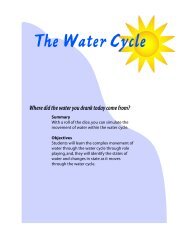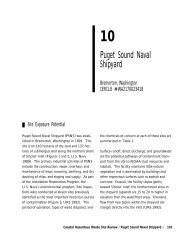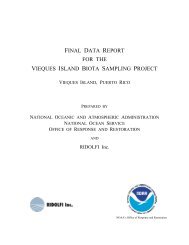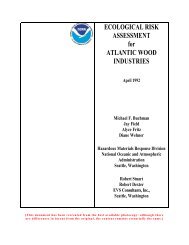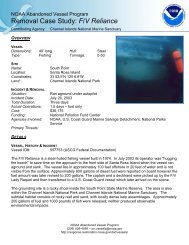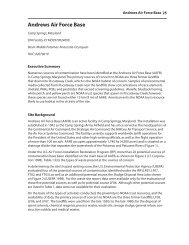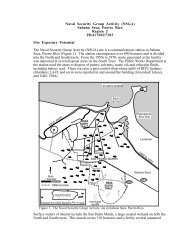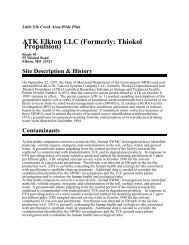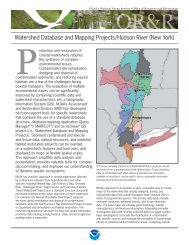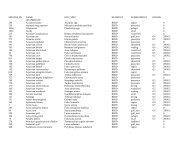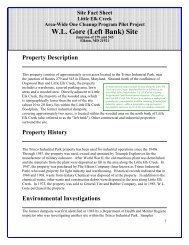Detroit River - NOAA's Ocean Service Office of Response and ...
Detroit River - NOAA's Ocean Service Office of Response and ...
Detroit River - NOAA's Ocean Service Office of Response and ...
Create successful ePaper yourself
Turn your PDF publications into a flip-book with our unique Google optimized e-Paper software.
<strong>Detroit</strong> <strong>River</strong><br />
Each Location File contains information about local oceanographic conditions that<br />
GNOME uses to model oil spills in the area covered by that Location File. Each Location<br />
File also contains references to help you learn more about the location you are<br />
simulating.<br />
As you work with the Location File for the <strong>Detroit</strong> <strong>River</strong>, GNOME will prompt you to:<br />
1. Choose the model settings (start date <strong>and</strong> time, <strong>and</strong> run duration).<br />
2. Set the <strong>Detroit</strong> <strong>River</strong> flow rate.<br />
3. Input the wind conditions.<br />
GNOME guides you through each <strong>of</strong> these choices. Each window has a button that<br />
leads you to helpful information <strong>and</strong> the general Help topic list. If you need help setting<br />
up the model, click the “Help” button. To learn more about setting the river flow rate,<br />
click the “Finding Flow Data” button. When you need to input the wind conditions in<br />
the “Choosing Wind Type” window, you can click the “Finding Wind Data” button to see<br />
a list <strong>of</strong> web sites that publish wind data for this region.<br />
More information about GNOME <strong>and</strong> Location Files is available at<br />
http://response.restoration.noaa.gov/gnome.<br />
Background<br />
Technical Documentation<br />
The <strong>Detroit</strong> <strong>River</strong> flows from Lake St. Clair on the north to Lake Erie on the south. The<br />
river is approximately 32 miles long <strong>and</strong> forms part <strong>of</strong> the international boundary<br />
between the United States <strong>and</strong> Canada. The upper third <strong>of</strong> the river is narrow channel<br />
whereas the lower two-thirds widens <strong>and</strong> has many isl<strong>and</strong>s.<br />
Current Patterns<br />
The <strong>Detroit</strong> <strong>River</strong> Location File contains one current pattern. The current pattern was<br />
created with the NOAA Current Analysis for Trajectory Simulation (CATS) hydrodynamic<br />
application. The tidal current pattern is calibrated using the NOAA Center for<br />
Operational <strong>Ocean</strong>ographic Products <strong>and</strong> <strong>Service</strong>s (CO-OPS) port stations in the <strong>Detroit</strong><br />
<strong>River</strong>. It should be noted that the model should not be used if the river is ice covered.<br />
References<br />
You can get more information about the <strong>Detroit</strong> <strong>River</strong> area from these publications <strong>and</strong><br />
web sites:<br />
2



